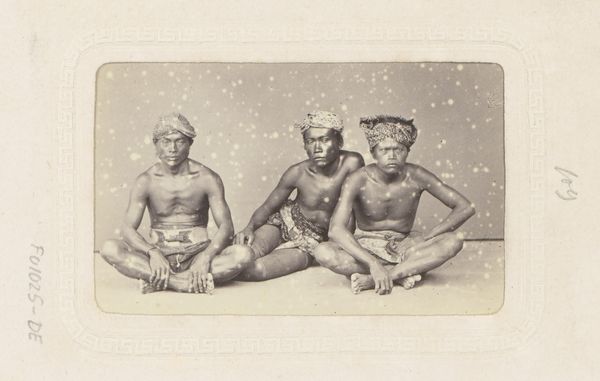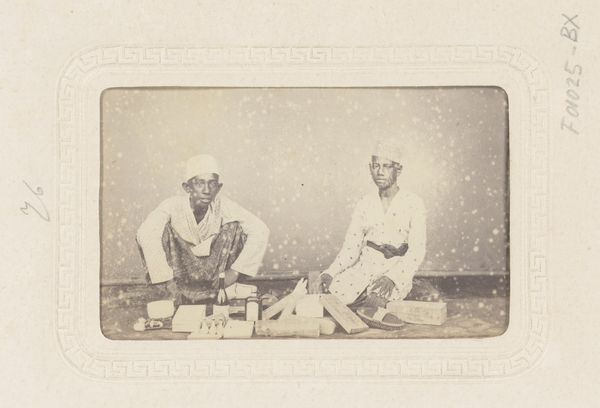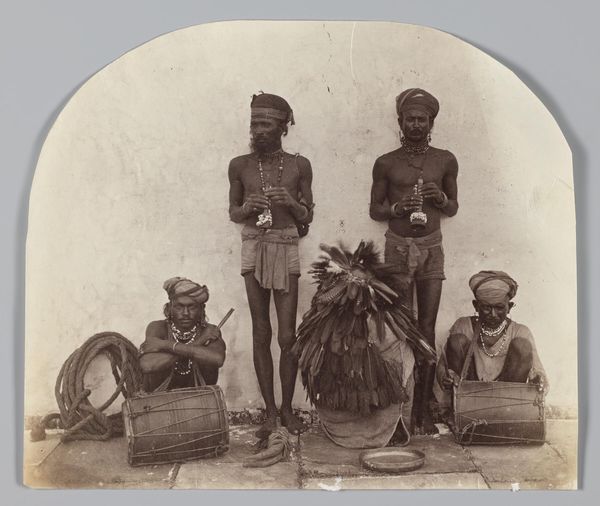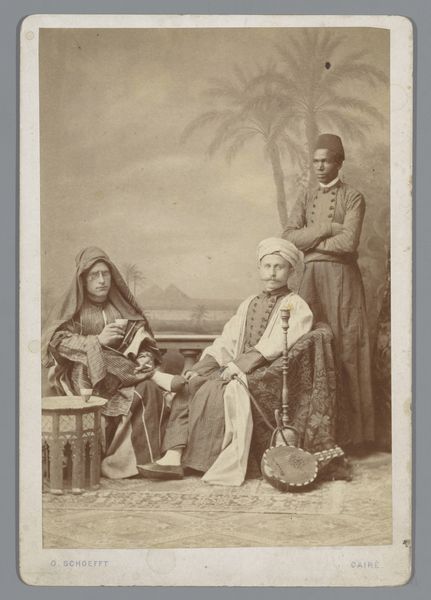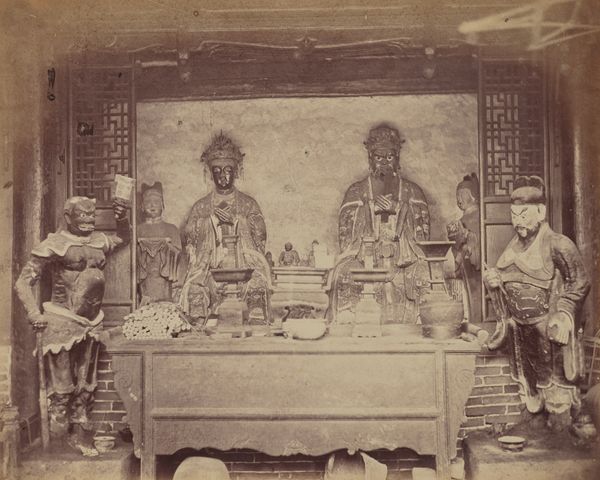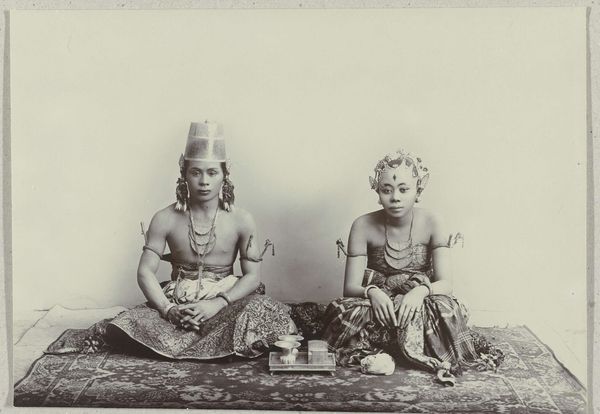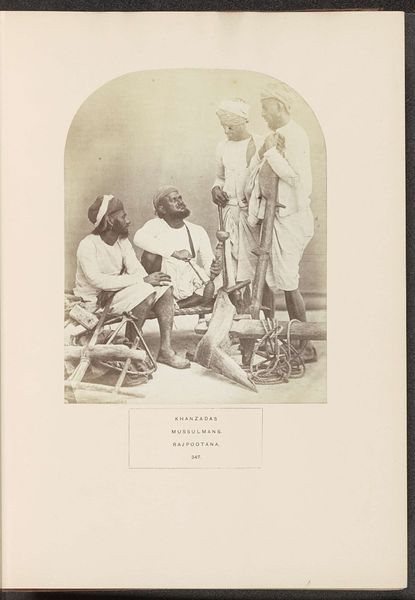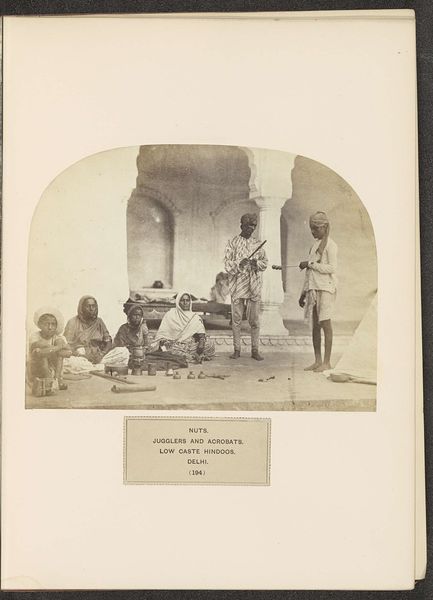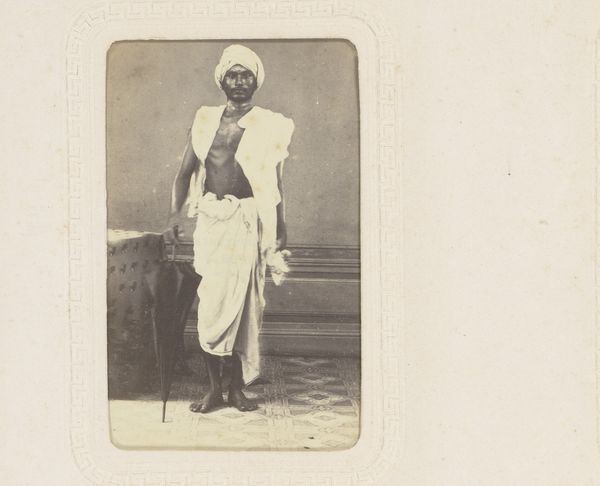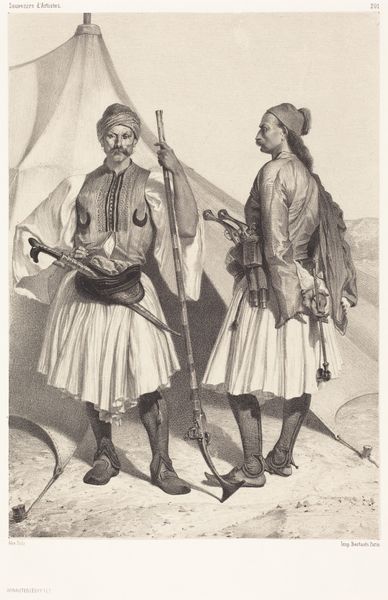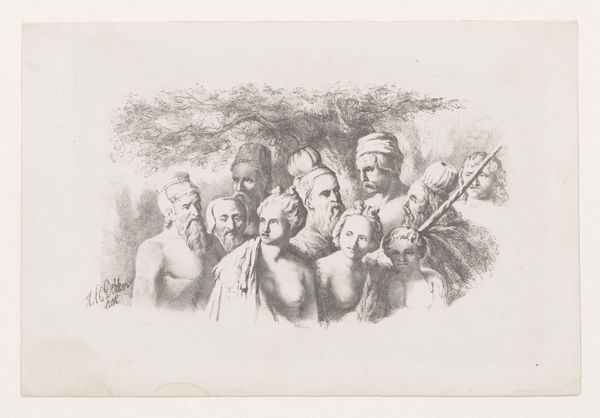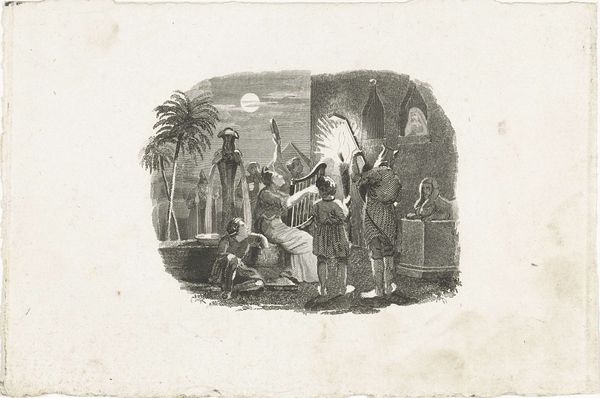
photography
#
portrait
#
african-art
#
photography
#
group-portraits
#
orientalism
#
realism
Dimensions: height 85 mm, height 52 mm
Copyright: Rijks Museum: Open Domain
Curator: This photograph, currently held at the Rijksmuseum, is attributed to Woodbury & Page. It’s titled "Portret van twee Indonesische mannen die opium roken," which translates to "Portrait of two Indonesian men smoking opium," and dates from between 1857 and 1880. Editor: It hits you like a humid day. Heavy. There's a stark stillness, despite the activity of smoking, a weary kind of elegance in the composition, too, but I'm also struck by a feeling of sadness... the bodies feel frail and presented as spectacle. Curator: Indeed. Woodbury & Page operated photographic studios in various locations across Southeast Asia and the picture reflects their interest in depicting people in staged and cultural contexts. Note how the photograph meticulously captures every textural detail, from the woven fabric of their clothing to the carved details on the opium pipe. This approach serves to transform these subjects into exotic 'types,' reinforcing existing colonial views of the Orient. Editor: Exotic types, yes, and shadows cast on hollow chests! See the light emphasizes not vitality, but what's BEEN taken. I wonder, did they choose to be photographed like this, almost like ethnographic displays frozen in sepia tones, with these blank backgrounds, like museum labels? And the rattan furniture appears as if the whole photograph could dissolve into threads! It looks brittle, like a web ready to crumble. Curator: Their agency is certainly a point of ongoing interpretation, particularly given photography’s use at the time for scientific classification, not solely artistic expression. Considering that the work comes out of a Realist impulse but also embraces Orientalist tropes, we might view the image as a powerful document reflecting the complex interplay between colonial gaze and photographic technology. Editor: So the composition does all the work then. A formal, posed scene; stark backdrop; balanced composition – the artist's work turning life, or rather, lived life, into shapes and light. But still, that ghostly beauty lingers. Despite knowing it's constructed, a tiny little shard of humanity escapes. Maybe its those direct gazes toward the photographer...the one on the left piercing. Curator: And it is that lingering question, isn’t it, about what is shown, and what is obscured, that keeps us coming back. Thank you for bringing fresh vision to the formal elements, the image’s material context, and indeed, its ghost. Editor: And thank you for helping me see past just shapes, letting me into that haunting story.
Comments
No comments
Be the first to comment and join the conversation on the ultimate creative platform.
